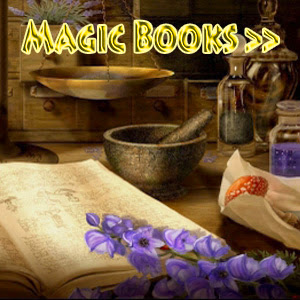In the Scottish Highlands and Islands the rebirth of nature is celebrated on Candlemas, or St Bride's Day on 1 February. The tradition has weakened but the same feast has been celebrated since time immemorial. At its height, bonfires were lit on hilltops and there would be a festival with some young maid crowned with candles and honoured in Brigid's stead. Candles were lit in every window and homes in the Isles were decorated with early flowers and greenery. Bride's Crosses or Wheels were woven from corn and hung around the house.
Women would also make a crib with a mattress of corn and hay. They called it Bride's Bed and into it they tucked under a blanket a straw doll representing Bride, and beside her a wooden club. The crib was laid near the door surrounded by glowing candles. Food and drink were laid on the table and a decorated chair set by the hearth. Then just before they went to bed, the women of the house would call out three times: 'Bride is come, Bride is welcome!' Or they would go to the door and cry out into the night for Bride to enter their house.
Next morning everyone would search the ashes of the hearth, hoping to find an impression of Bride's club. If they did it was the sign that they would have prosperity and a good crop in the coming year. The weather that day was also watched closely because, as the old saying has it" Candlemas day be fair and bright, Winter will have another flight. " Candlemas day be shower and rain, Winter is gone and will not come again.
St Bride's day, wherever it is celebrated, is one of the clearest examples of a pagan festival being adopted by Christianity because even the name has not changed. St Bride or Brigid simply took over the mantle of the pagan Brigid, chief goddess of not only the ancient Irish but Celts across a wide swathe of western Europe. The name in Gaelic means 'bright flame'. In northern Britain she was called Brigantia, chief deity of the Brigantes tribe who were often led by warrior queens. Elsewhere she was called Brigit, Bride, Brighid, Brigandu and Berecynthia.
Whatever the precise spelling, Brigid was a triple goddess. Or, as it was sometimes put, there were three sisters all called Brigid who were the patronesses respectively of fertility,poetry and smithcraft.
As goddess of fertility Brigid was concerned equally with humans, animals and vegetation. Everywhere she walked, flowers sprang up under her feet. In her shrine it was always springtime and her herds never ran dry of milk. Brigid was the patroness of midwifery and of healing generally. She was particularly associated with sacred springs and holy wells, to which people would bring prayers and offerings to ward disease and barrenness. These wells were adopted by her Christian successor and many continue to be places of pilgrimage today.
As goddess of poetry, Brigid was keeper and dispenser of inspiration, the 'fire of the soul'. The symbolism of water and fire is combined in the Cauldron of Inspiration, of which she is the keeper. She invented the Ogham alphabet and it is said of both pagan and Christian Brigids that they were struck in their forehead on birth by a shaft of fire from heaven.
As goddess of earthly fire, the third Brigid was the patroness of metalcraft and all smith-work. In legendary battle her preferred weapons were the spear and arrow, and indeed one interpretation of her name is 'Flaming Arrow'.
Brigid's festival was one of the four main events in the ancient Celtic calendar because it marks the invisible rewakening of Nature within the cold earth. It was also sometimes called Oilmec, 'Ewe's Milk' because it opened the season of lambing.
On Brigid's Night the maiden goddess of fruitfulness and abundance replaces the sombre hag who took possession of the year at Samain (Hallowe'en or All Saints Night). The grim goddess of reckoning and mortality is replaced by the smiling one of hope, full of virginal gaiety, beauty and promise.
Keywords: ishta devata affirmations nuit yemonja goddess ocean father frost moon inanna goddess rhea heracles gods pale horseman love rituals love wicca shop commonsense modern practitioners green spirituality witchcraft book driftes witches
This entry was posted
on 8 January 2008
at Tuesday, January 08, 2008
. You can follow any responses to this entry through the
.
0 comments
Popular Posts
-
Astraea: Italian goddess of truth and justice. Also known as Astria. Aradia: Italian witch goddess. She came to earth to teach her mother ...
-
Maria Cacao is the diwata or mountain goddess associated with Mount Lantoy in Argao, Cebu, Philippines, similar to Maria Makiling of Los Ba~...
-
Tlaloc, also known as Nuhualpilli, was, in Aztec belief, the god of rain and fertility. He was greatly feared among the Aztecs, who drowned ...
-
APHRODITE ( Roman name Venus ) was the goddess of love, beauty and fertility. She was also a protectress of sailors. The poet Hesiod said th...
Archives
- ► 2011 (371)
- ► 2010 (408)
- ► 2009 (383)
- ▼ 2008 (323)






